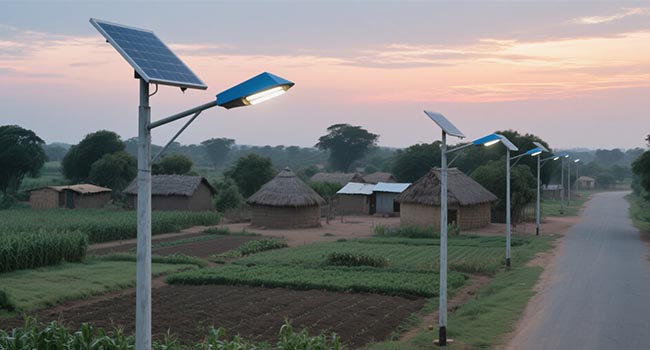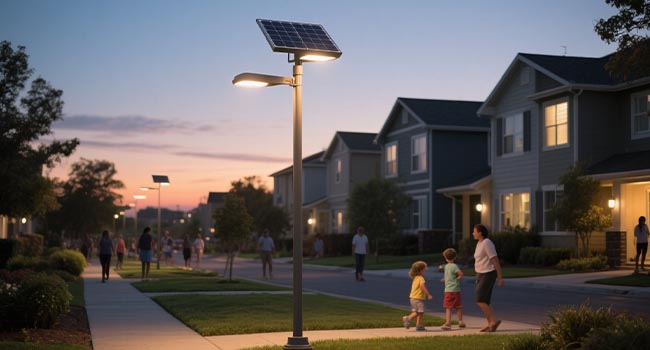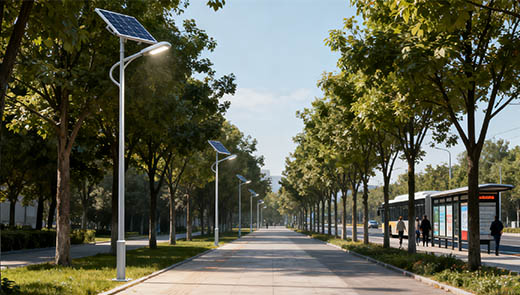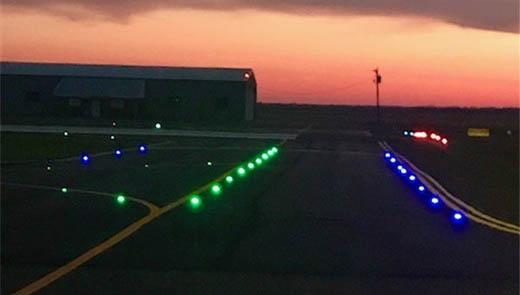Solar Street Light Price: A Comprehensive Analysis of Key Pricing Parameters
In solar street light procurement decisions, price serves as the pivotal link connecting budget, quality, returns, and environmental value. Many buyers fall into the trap of “focusing solely on low prices,” overlooking the quality risks behind low bids or the wasteful markups in high-priced options. Deeply understanding pricing logic not only controls procurement costs but also lays the foundation for long-term stable operation and maximized project returns.

Why should we pay attention to the solar street light price?
Price is the “first hurdle” in procurement decisions
For buyers, price is the primary trigger for purchase intent. Only when it aligns with budget or industry benchmarks will further evaluation of quality, performance, and other dimensions occur. Horizontal comparisons can identify products with balanced cost-effectiveness, but beware of “extremely low-price” traps—some manufacturers cut costs using inefficient components and inferior materials. While saving money short-term, this may lead to increased replacement costs later due to brightness decay and shortened lifespan. Conversely, excessively high prices without technical or quality justification also constitute financial waste. A rational approach to pricing is key to mitigating risks and optimizing procurement funds.
Price directly determines long-term return on investment (ROI)
Solar street lights exhibit a “high upfront investment, low ongoing consumption” characteristic: their initial cost exceeds traditional street lights, but they require no grid installation, incur no electricity expenses, and demand only one-third the maintenance frequency of conventional systems. The initial price is the core variable in calculating ROI. For example, at the same power output, solar street lights require a higher initial investment than traditional lights. However, over the long term, the former's average annual cost is significantly lower than the latter's. Only by clearly defining the initial price can the payback period be calculated through “initial cost minus long-term savings,” enabling an assessment of the project's economic viability.
Price is intrinsically linked to system sustainability and environmental value
Solar street lights leverage clean energy to reduce carbon emissions, and pricing directly impacts the adoption and sustainability of this eco-friendly solution. Reasonable low prices lower procurement barriers, enabling adoption in rural, remote areas, or budget-constrained projects, thereby expanding clean energy applications. Higher prices, when paired with premium configurations (e.g., weather-resistant lamp bodies, long-life batteries), extend product lifespan, reduce replacement frequency, minimize electronic waste pollution at the source, and enhance overall lifecycle environmental value.
Factors that affect the solar street light price
The forces of demand and supply
Supply-demand imbalances are the primary driver of short-term price fluctuations, particularly evident in regional markets. When policy initiatives or infrastructure demands trigger surges in solar street light demand, manufacturers may raise prices if local production capacity falls short. However, cross-border procurement effectively mitigates this issue. As the world's largest solar street light manufacturing base, China boasts numerous manufacturers with scaled production capabilities. They can rapidly fulfill orders, helping buyers avoid price pressures stemming from regional supply-demand fluctuations.
Price of raw materials
Raw materials account for 60%-70% of solar street light production costs. Material quality and specifications directly determine both price and product performance. The industry consensus is that “low-cost materials = low quality.” For instance, monocrystalline silicon solar panels (19%-22% conversion efficiency) cost 30%-40% more than polycrystalline silicon (15%-17%), yet offer longer lifespan and superior resilience in complex weather conditions. Lithium iron phosphate batteries cost 50%-60% more than lead-acid batteries but deliver greater durability and better low-temperature performance. While selecting low-cost raw material products may reduce short-term expenses for buyers, it significantly increases long-term maintenance and replacement costs, ultimately driving up total lifecycle costs.
Taxation policy
Taxation policy is a key factor driving price variations across regions. China leverages supportive policies for its new energy industry, such as a 13% export tax rebate and a 15% corporate income tax rate for high-tech enterprises, significantly reducing manufacturers' costs and enhancing product competitiveness. Conversely, if the procurement location imposes high tariffs or consumption taxes on solar products, distributors will pass these costs onto retail prices, leading to substantial local price increases. Therefore, when sourcing cross-border, it is essential to thoroughly understand the tax policies of the target region and select low-cost channels.
The general state of the solar market economy
Macroeconomic stability indirectly impacts solar streetlight prices by influencing raw material costs, logistics expenses, and labor costs. If a manufacturer's region experiences high inflation, significant currency fluctuations, or supply chain disruptions, the rising costs of production factors will lead to higher product quotations. Regions like China's Yangtze River Delta and Pearl River Delta, characterized by economic stability, mature industrial chains, controllable costs, minimal fluctuations, and sustained policy support, enable manufacturers to offer more stable quotations. This provides buyers with reasonable pricing while mitigating cost risks associated with economic volatility.

Things to consider when comparing solar street light price
Solar street light technology
Solar street light luminaire technology primarily falls into two categories: LED and HID. LED street lights have a higher initial cost but achieve luminous efficacy of 120–150 lm/W, offering 50%–70% energy savings and a lifespan of 30,000–50,000 hours. HID lights have lower initial costs but only achieve 60–80 lm/W luminous efficacy, consume more energy, last only 5,000–10,000 hours, and require 5–10 minutes of warm-up time to start.
Regarding environmental adaptability, LED streetlights operate between -30°C and 70°C, while HID lights have a narrower operating temperature range, struggle with cold-weather starts, and experience reduced lifespan. From a total lifecycle cost perspective, although LEDs require higher upfront investment, their long-term costs are only about 50% of HIDs. Unless project budgets are limited and usage cycles are short, LED streetlights offer superior cost-effectiveness.
Power rating
Power determines the illumination intensity and coverage area of solar street lights. Generally, higher power means higher cost, but more power isn't always better. Typically:
30W–60W lights suit community paths and rural side roads, offering lower prices;80W–120W lights are suitable for suburban roads and township main streets, with moderate pricing; while 150W–200W models serve urban secondary roads and highway service areas at higher costs. For instance, rural side roads require only 60W products for basic illumination. Opting for 150W increases costs by over 40% while overloading solar panels and batteries, potentially shortening battery lifespan. Thus, selecting power ratings based on actual application needs controls costs and enhances cost-effectiveness.
Controller technology
The controller serves as the “central brain” of solar street lights, managing charging/discharging alongside functions like light control, time control, and dimming. Its technical sophistication impacts both price and system longevity. Basic controllers offer only fundamental charging/discharging protection and light control, reducing overall costs by 10%-15%. However, they risk overcharging or over-discharging batteries, shortening battery life, and lack dimming capabilities, leading to energy waste. Smart controllers feature multi-level protection and dimming capabilities, with some supporting remote monitoring. While increasing overall costs by 10%-20%, they extend battery life by 2-3 years. Dimming functionality further saves 20%-30% in electricity consumption and reduces maintenance expenses.
Solar street light pricing is not a single figure but a composite signal integrating supply and demand, materials, technology, and policy. Procurement must transcend the “lowest price only” mindset. By evaluating actual site requirements and assessing technical compatibility, power rationality, and controller performance, projects can balance cost control with long-term operational stability and environmental value. This ensures every investment translates into sustainable project returns.




